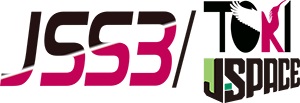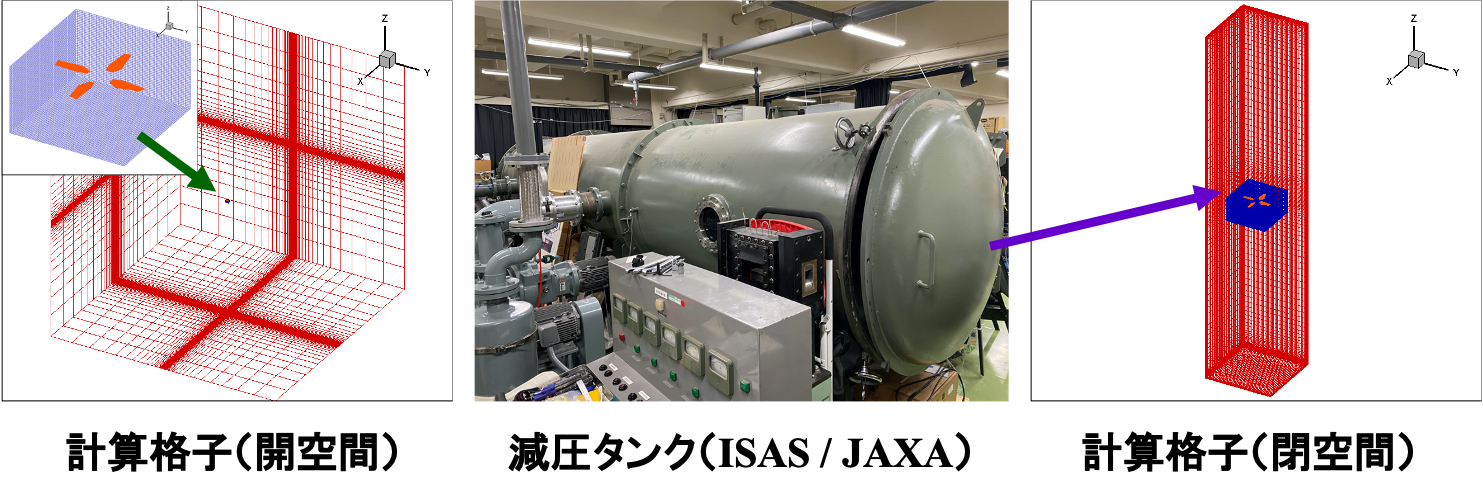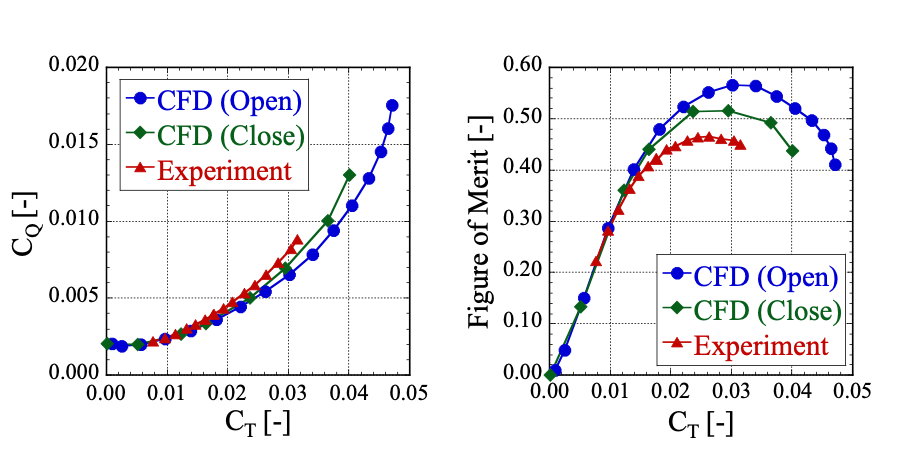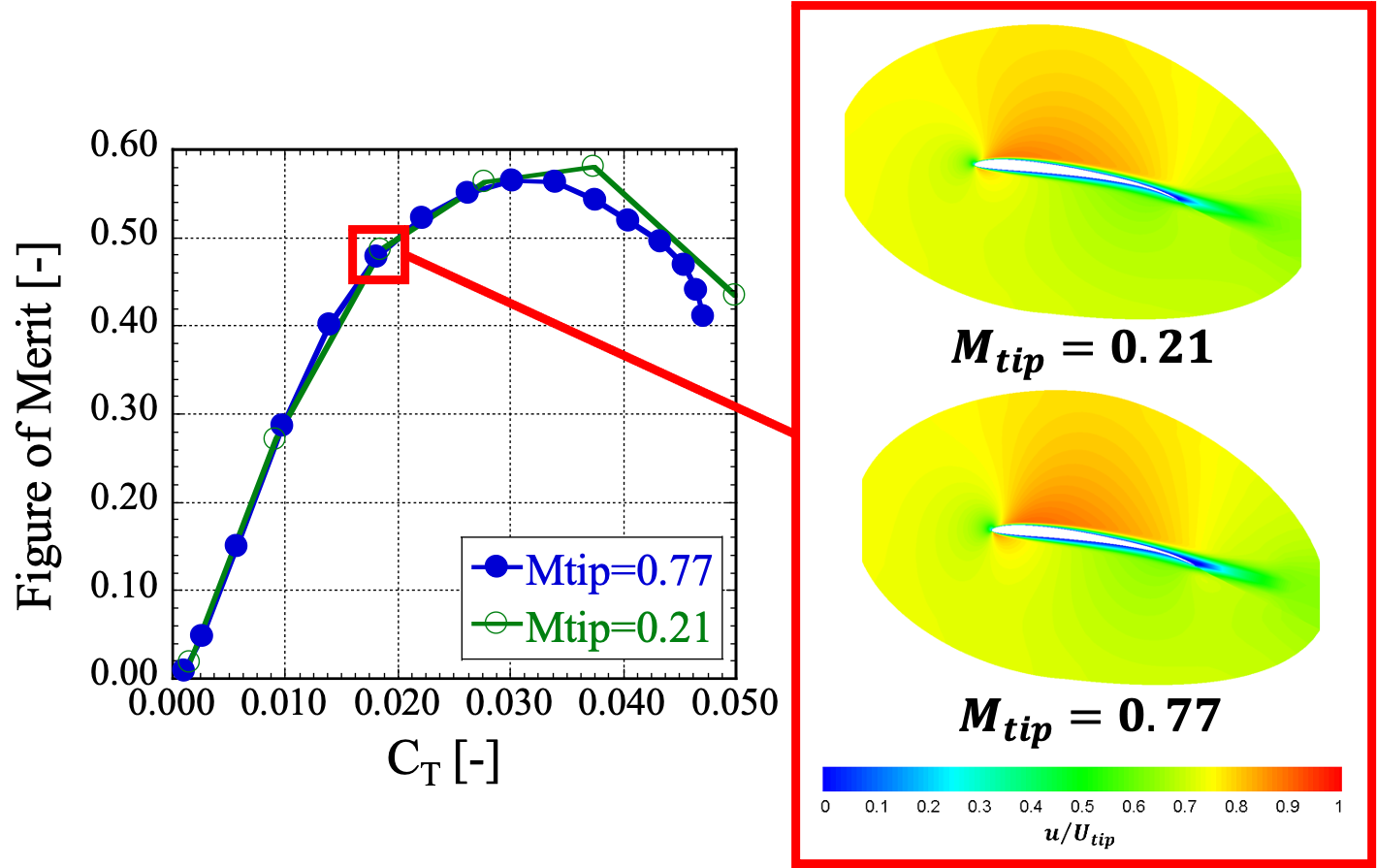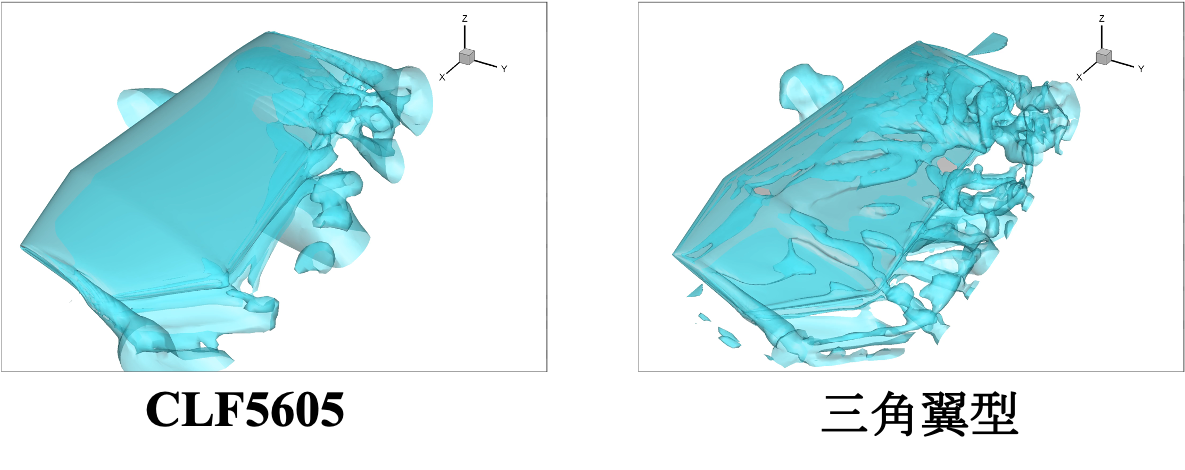Numerical Study on Rotor Performance of Mars Helicopter
JAXA Supercomputer System Annual Report February 2022-January 2023
Report Number: R22EACA41
Subject Category: JSS Inter-University Research
- Responsible Representative: Makoto Sato, Associate Professor, Kogakuin University
- Contact Information: Makoto Sato, Kogakuin University(msato@cc.kogakuin.ac.jp)
- Members: Makoto Sato, Kota Yoshikawa
Abstract
A Mars helicopter “HAMILTON” has been developed by JAXA, Tokyo Metropolitan University and Kogakuin University. Since the atomospheric density on Mars is about 1/100, the sound of speed is about 3/4 compared with those on Earth, we need to develop the high perfmance heli-rotor. In JAXA, the experimental measurements of the heli-rotor performance at low-Reynolds number condition have been conducted. In the present research, we have conducted numerical simulations on the Mars heli-rotor in order to clarify the characteristics of the flow field.
Reference URL
N/A
Reasons and benefits of using JAXA Supercomputer System
We need to conduct the large-scale simulations on the rotational wing flow using “rFlow3D”, which has been developed in JAXA.
Achievements of the Year
Firstly, the numerical simulation on the Mars-heli rotor in the closed space has been conducted to investigate the closed space effects on the flow fields and rotor performances. Secondly, we have investigated the compressibility effects on the flow fields and rotor performances. The simulation solver is rFlow3D developed by JAXA, and the computational object is the single rotor of “HAMILTON”[1]. Here, we used the two airfoil shapes for the rotor-blade, CLF5605 airfoil and triangular airfoil.
Figure 1 shows the computational grids for the open and closed spaces with the low-pressure tank used in the experiment. Figure 2 shows the aerodynamic performances for the open and closed cases. Here, the experimental results are also shown. As the thrust coefficient increases, the effect of the closed space becomes more significant and the difference between the open space and the closed space becomes larger. On the other hand, for the low thrust coefficient cases, the difference becomes low, and the computational results agree with the experimental results well.
Figure 3 shows the compressibility effects for the heli-rotor with the CLF5605 airfoil blade. The results indicate that the difference between the high tip Mach number case and the low tip Mach numbe case is very small.
Figure 4 depicts the flow fields for the heli-rotor with the CLF5605 and triangle airfoil. While the compressibility effects are low for both airfoil cases, the flow fields become different due to the airfoil shape.
[1] Sugiura, M., Tanabe, Y., Sugawara, H., Kimura, K., Oyama, A., Sato, M., Yoshikawa, K., Buto, Y., Kanazaki, M., Kishi, Y., Kikuchi, D., and Minajima, T., “Blade Shape Optimization of Mars Helicopter Exploring Pit Craters”, VFS Forum 78-paper93, 2022.
Publications
N/A
Usage of JSS
Computational Information
- Process Parallelization Methods: N/A
- Thread Parallelization Methods: OpenMP
- Number of Processes: 1
- Elapsed Time per Case: 1920 Hour(s)
JSS3 Resources Used
Fraction of Usage in Total Resources*1(%): 0.02
Details
Please refer to System Configuration of JSS3 for the system configuration and major specifications of JSS3.
| System Name | CPU Resources Used(Core x Hours) | Fraction of Usage*2(%) |
|---|---|---|
| TOKI-SORA | 568031.81 | 0.02 |
| TOKI-ST | 2.00 | 0.00 |
| TOKI-GP | 0.00 | 0.00 |
| TOKI-XM | 0.00 | 0.00 |
| TOKI-LM | 0.00 | 0.00 |
| TOKI-TST | 0.00 | 0.00 |
| TOKI-TGP | 0.00 | 0.00 |
| TOKI-TLM | 0.00 | 0.00 |
| File System Name | Storage Assigned(GiB) | Fraction of Usage*2(%) |
|---|---|---|
| /home | 15.00 | 0.01 |
| /data and /data2 | 35840.00 | 0.28 |
| /ssd | 150.00 | 0.02 |
| Archiver Name | Storage Used(TiB) | Fraction of Usage*2(%) |
|---|---|---|
| J-SPACE | 0.00 | 0.00 |
*1: Fraction of Usage in Total Resources: Weighted average of three resource types (Computing, File System, and Archiver).
*2: Fraction of Usage:Percentage of usage relative to each resource used in one year.
ISV Software Licenses Used
| ISV Software Licenses Used(Hours) | Fraction of Usage*2(%) | |
|---|---|---|
| ISV Software Licenses(Total) | 0.00 | 0.00 |
*2: Fraction of Usage:Percentage of usage relative to each resource used in one year.
JAXA Supercomputer System Annual Report February 2022-January 2023

